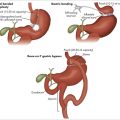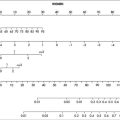chapter 3 Therapeutic modalities in integrative medicine
DEFINITIONS
UNORTHODOX MEDICINE
The term unorthodox medicine is sometimes used to denote those therapies that are not generally taught in medical schools or widely accepted in clinical practice. They are also sometimes referred to as unconventional medicine. By definition, unorthodox therapies are ‘non-scientific’ or not based on credible science or evidence, because if they were then they would be orthodox. However, this is not always the case, as there are an increasing number of examples of treatments that are not widely accepted or practised but are well supported by evidence. The boundary between orthodox and unorthodox therapies is shifting and often indistinct. For example, acupuncture would have been outside the boundary 30 years ago, but today, with a significant evidence base and approximately 90% of Australian GPs referring patients for acupuncture, it could no longer be considered an unorthodox therapy.
COMPLEMENTARY MEDICINE
GP USE OF CAM
Primary care physicians in the developed world are integrating a range of complementary therapies into their practices either by delivering the therapy themselves or by referring patients to practitioners (Table 3.1). The therapies most integrated tend to be those that the doctor believes are based on good evidence and/or are safest.1 Four therapies with particularly high referral rates are acupuncture, meditation, hypnosis and chiropractic. Herbal medicine, naturopathy and osteopathy also have referral rates of close to 30%. In terms of doctors practising complementary therapies, vitamin therapy is most frequently used, followed by acupuncture, meditation and hypnosis. Despite the increasing prevalence of use of CM, medical education has been slow to incorporate these topics into the curriculum.
TABLE 3.1 Rates of practice and referral for complementary therapies by Australian GPs
| Ever referred (%) | Have practised (%) | |
|---|---|---|
| Acupuncture | 89.6 | 19.0 |
| Meditation | 79.6 | 15.3 |
| Hypnosis | 81.6 | 8.7 |
| Chiropractic | 68.5 | 5.0 |
| Herbal medicine | 29.1 | 4.8 |
| Naturopathy | 29.7 | 3.2 |
| Vitamin therapy | 16.9 | 25.1 |
| Homeopathy | 19.2 | 2.5 |
| Osteopathy | 29.6 | 2.8 |
| Aromatherapy | 17.5 | 1.1 |
| Spiritual healing | 19.5 | 2.1 |
| Reflexology | 10.1 | 0.5 |
Source: Pirotta et al2
MODALITIES OF CAM
There are five categories of CAM, according to the most widely accepted classification from the National Center for Complementary and Alternative Medicine (NCCAM) in the United States:3
BIOLOGICALLY BASED THERAPIES
Biologically based therapies include those that use biologically active compounds, most of which are naturally occurring. These would most often include food, herbs, vitamins and supplements, but could also include things such as homeopathic remedies and essential oils used in aromatherapy. Much of the rationale for herbal therapies comes from the philosophy that whole-plant compounds include a range of co-factors, vitamins and nutrients that would not be available if one biologically active ingredient were isolated, measured and administered. Such an approach is said to improve efficacy and minimise side effects. Many pharmaceuticals, of course, are derived from plants, including aspirin, digoxin, penicillin, quinine and metformin, to name a few. Although most biologically based therapies are safer than their pharmacological counterparts, they are biologically active and can interact with drugs, and so it is important to know what patients are taking and to check potential interactions.
MANIPULATIVE AND BODY-BASED THERAPIES
These physical therapies are, like other categories, diverse and widely used. They include:
ENERGY-BASED THERAPIES
There are two main types of energy therapies:
Alternative and Complementary Therapies and Journal of Alternative and Complementary Medicine. http://www.liebertpub.com/act. (main Medline-listed journals focusing on CAM)
Alternative Medicine Center. http://www.healthy.net/clinic/therapy/index.asp. (has a workable database and searches for practitioners)
Australasian Integrative Medicine Association. http://www.aima.net.au. (peak umbrella body for integrative medicine in Australasia)
Cochrane reviews, Medline, PubMed
IMgateway. http://www.imgateway.net/page.jsp?p_name=Home. (Australian organisation that collates data and networks people)
National Foundation for Alternative Medicine. http://www.nfam.org.
US government, National Center for CAM. http://www.nccam.nih.gov. (a good place to start, with guidance for therapists considering adopting CAM)
1 Cohen MM, Penman S, Pirotta M, et al. The integration of complementary therapies in Australian general practice: results of a national survey. J Altern Complement Med. 2005;11(6):995-1004.
2 Pirotta MV, Cohen MM, Kotsirilos V, et al. Complementary therapies: have they become accepted in general practice? Med J Aust. 2007;172(3):105-109.
3 National Center for Complementary and Alternative Medicine (NCCAM). What are the major types of complementary and alternative medicine? Online. Available: www.nccam.nih.gov.
4 Astin JA, Shapiro SL, Eisenberg DM, et al. Mind–body medicine: state of the science, implications for practice. Am Board Fam Pract. 2003;16(2):131-147. a p 131.





